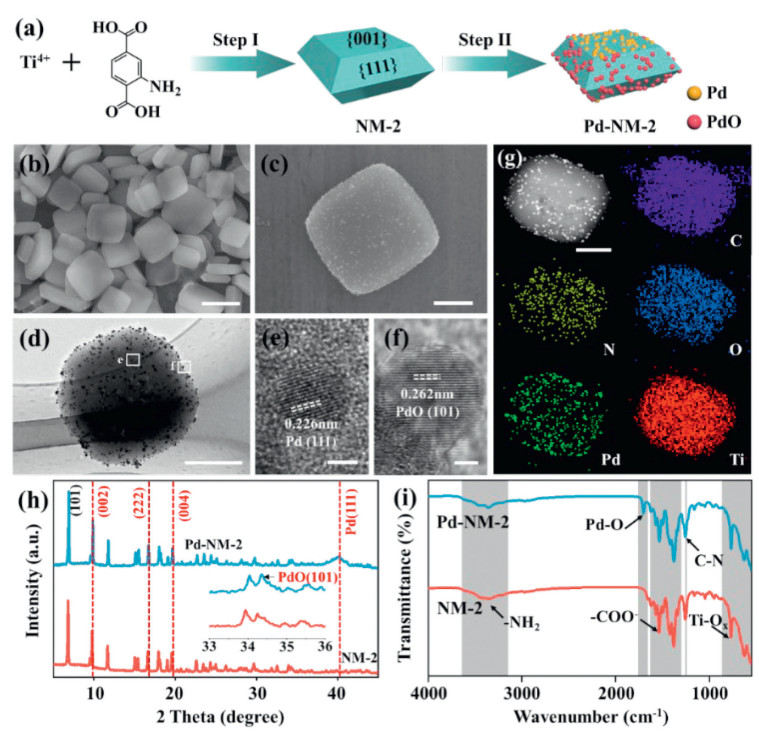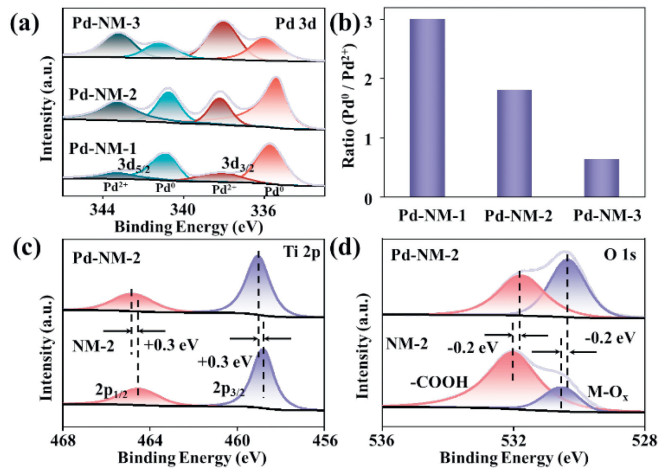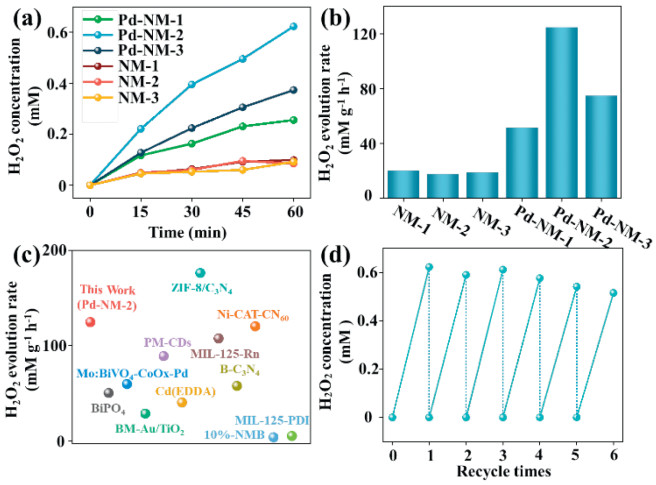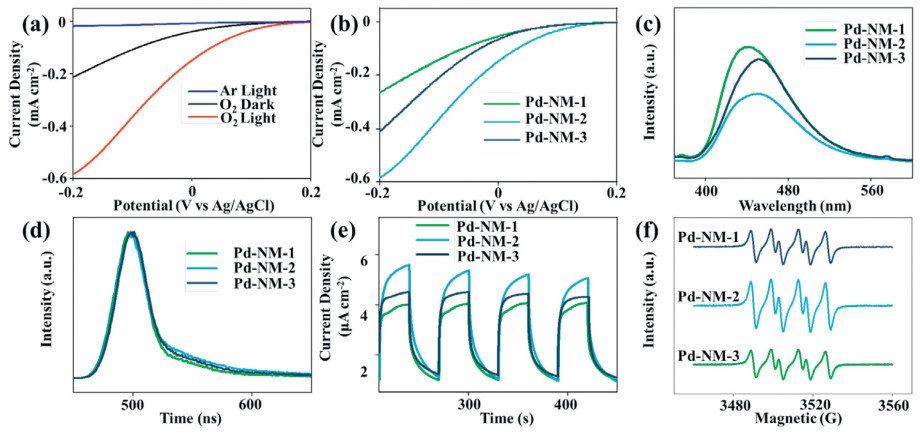-
[1]
A. Santos, R.J. Lewis, G. Malta, et al., Ind. Eng. Chem. Res. 58 (2019) 12623–12631.
doi: 10.1021/acs.iecr.9b02211
-
[2]
S. Li, K. Rong, X. Wang, et al., Acta Phys. Chim. Sin. 40 (2024) 2403005.
doi: 10.3866/pku.whxb202403005
-
[3]
Y. Xue, Y. Wang, Z. Pan, et al., Angew. Chem. Int. Ed. 60 (2021) 10469–10480.
doi: 10.1002/anie.202011215
-
[4]
J.M. Campos-Martin, G. Blanco-Brieva, J.L.G. Fierro, Angew. Chem. Int. Ed. 45 (2006) 6962–6984.
doi: 10.1002/anie.200503779
-
[5]
Z. Jiang, X. Xu, Y. Ma, et al., Nature 586 (2020) 549–554.
doi: 10.1038/s41586-020-2738-2
-
[6]
L. Zhou, W. Zhou, M. Yu, et al., J. Liaocheng Univ. (Nat. Sci. Ed. ) 37 (2024) 50–61.
-
[7]
C. Zhuang, Y. Chang, W. Li, et al., ACS Nano 18 (2024) 5206–5217.
doi: 10.1021/acsnano.4c00217
-
[8]
Q. Zhang, M. Zhou, G. Ren, et al., Nat. Commun. 11 (2020) 1731.
-
[9]
Z. Tian, C. Han, Y. Zhao, et al., Nat. Commun. 12 (2021) 2039.
-
[10]
B. He, Z. Wang, P. Xiao, et al., Adv. Mater. 34 (2022) 2203225.
-
[11]
K. Kim, J. Park, H. Kim, et al., ACS Catal. 9 (2019) 9206–9211.
doi: 10.1021/acscatal.9b02269
-
[12]
O. Tomita, T. Otsubo, M. Higashi, et al., ACS Catal. 6 (2016) 1134–1144.
doi: 10.1021/acscatal.5b01850
-
[13]
S. Li, K. Dong, M. Cai, et al., eScience (2024) 100208.
-
[14]
J. Luo, X. Wei, Y. Qiao, et al., Adv. Mater. 35 (2023) 2210110.
-
[15]
A. Wang, H. Liang, F. Chen, et al., Appl. Catal. B 310 (2022) 121336.
-
[16]
B. Liu, J. Du, G. Ke, et al., Adv. Funct. Mater. 32 (2022) 2111125.
-
[17]
L. Zhou, J. Lei, F. Wang, et al., Appl. Catal. B 288 (2021) 119993.
-
[18]
L. Shi, L. Yang, W. Zhou, et al., Small 14 (2018) 1703142.
-
[19]
H. Cheng, J. Cheng, L. Wang, et al., Chem. Mater. 34 (2022) 4259–4273.
doi: 10.1021/acs.chemmater.2c00936
-
[20]
C. Zhao, X. Wang, Y. Yin, et al., Angew. Chem. Int. Ed. 62 (2023) e202218318.
-
[21]
L. Yuan, C. Zhang, J. Wang, et al., Nano Res. 14 (2021) 3267–3273.
doi: 10.1007/s12274-021-3517-6
-
[22]
P. Das, J. Roeser, A. Thomas, Angew. Chem. Int. Ed. 62 (2023) e202304349.
-
[23]
M. Kou, Y. Wang, Y. Xu, et al., Angew. Chem. Int. Ed. 61 (2022) e202200413.
-
[24]
H. Wang, C. Yang, F. Chen, et al., Angew. Chem. Int. Ed. 61 (2022) e202202328.
-
[25]
L. Yuan, Y. Zou, L. Zhao, et al., Appl. Catal. B 318 (2022) 121859.
-
[26]
Y. Li, F. Ma, L. Zheng, et al., Mater. Horiz. 8 (2021) 2842–2850.
doi: 10.1039/d1mh00869b
-
[27]
J. Qiu, D. Dai, J. Yao, Coord. Chem. Rev. 501 (2024) 215597.
-
[28]
W. Liang, P. Wied, F. Carraro, et al., Chem. Rev. 121 (2021) 1077–1129.
doi: 10.1021/acs.chemrev.0c01029
-
[29]
B. He, Q. Zhang, Z. Pan, et al., Chem. Rev. 122 (2022) 10087–10125.
doi: 10.1021/acs.chemrev.1c00978
-
[30]
N.F. Suremann, B.D. McCarthy, W. Gschwind, et al., Chem. Rev. 123 (2023) 6545–6611.
doi: 10.1021/acs.chemrev.2c00587
-
[31]
J. Xiao, Q. Han, Y. Xie, et al., Environ. Sci. Technol. 51 (2017) 13380–13387.
doi: 10.1021/acs.est.7b04215
-
[32]
Q. Wang, T. Hisatomi, Q. Jia, et al., Nat. Mater. 15 (2016) 611–615.
doi: 10.1038/nmat4589
-
[33]
L. Bai, F. Ye, L. Li, et al., Small 13 (2017) 1701607.
-
[34]
R. Li, H. Han, F. Zhang, et al., Energy Environ. Sci. 7 (2014) 1369–1376.
-
[35]
M. Li, S. Yu, H. Huang, et al., Angew. Chem. Int. Ed. 58 (2019) 9517–9521.
doi: 10.1002/anie.201904921
-
[36]
L. Mu, Y. Zhao, A. Li, et al., Energy Environ. Sci. 9 (2016) 2463–2469.
-
[37]
R. Li, F. Zhang, D. Wang, et al., Nat. Commun. 4 (2013) 1432.
-
[38]
J. Pan, G. Liu, G.Q.M. Lu, et al., Angew. Chem. Int. Ed. 50 (2011) 2133–2137.
doi: 10.1002/anie.201006057
-
[39]
X.M. Cheng, X.Y. Dao, S.Q. Wang, et al., ACS Catal. 11 (2020) 650–658.
-
[40]
C. Zhou, S. Wang, Z. Zhao, et al., Adv. Funct. Mater. 28 (2018) 1801214.
-
[41]
J. Zhang, T. Bai, H. Huang, et al., Adv. Mater. 32 (2020) 2004747.
-
[42]
A. Meng, J. Zhang, D. Xu, et al., Appl. Catal. B 198 (2016) 286–294.
-
[43]
T. Liu, Z. Pan, J.J.M. Vequizo, et al., Nat. Commun. 13 (2022) 1034.
-
[44]
X. Xie, Y. Li, Z.Q. Liu, et al., Nature 458 (2009) 746–749.
doi: 10.1038/nature07877
-
[45]
W. Jiang, C. Ni, L. Zhang, et al., Angew. Chem. Int. Ed. 61 (2022) e202302575.
-
[46]
C.Y. Liu, X.R. Chen, H.X. Chen, et al., J. Am. Chem. Soc. 142 (2020) 6690–6697.
doi: 10.1021/jacs.0c00368
-
[47]
F.L. Li, Q. Shao, X. Huang, et al., Angew. Chem. Int. Ed. 57 (2018) 1888–1892.
doi: 10.1002/anie.201711376
-
[48]
L. Jiao, Y. Wang, H.L. Jiang, et al., Adv. Mater. 30 (2018) 1703663.
-
[49]
M.S. Yao, J.W. Xiu, Q.Q. Huang, et al., Angew. Chem. Int. Ed. 131 (2019) 15057–15061.
doi: 10.1002/ange.201907772
-
[50]
F. Guo, J.H. Guo, P. Wang, et al., Chem. Sci. 10 (2019) 4834–4838.
doi: 10.1039/c8sc05060k
-
[51]
J. Ge, D. He, W. Chen, et al., J. Am. Chem. Soc. 138 (2016) 13850–13853.
doi: 10.1021/jacs.6b09246
-
[52]
B.T. Meshesha, N. Barrabés, K. Föttinger, et al., Appl. Catal. B 117-118 (2012) 236–245.
-
[53]
T.J. Wang, F.M. Li, H. Huang, et al., Adv. Funct. Mater. 30 (2020) 2000534.
-
[54]
L. Yuan, C. Zhang, Y. Zou, et al., Adv. Funct. Mater. 33 (2023) 2214627.
-
[55]
Z. Sorinezami, H. Mansouri-Torshizi, M. Aminzadeh, J. Biomol. Struct. Dyn. 37 (2019) 4238–4250.
doi: 10.1080/07391102.2018.1546619
-
[56]
Y. Tian, W. Li, C. Zhao, et al., Appl. Catal. B 213 (2017) 136–146.
doi: 10.1145/3083187.3083198
-
[57]
C. Zhang, C. Xie, Y. Gao, et al., Angew. Chem. Int. Ed. 61 (2022) e202204108.
-
[58]
W. Li, X.S. Chu, F. Wang, et al., Appl. Catal. B 288 (2021) 120034.
-
[59]
M. Guo, Q. Meng, W. Chen, et al., Angew. Chem. Int. Ed. 62 (2023) e202305212.
-
[60]
Q. Wu, J. Cao, X. Wang, et al., Nat. Commun. 12 (2021) 483.
-
[61]
J.Y. Bai, L.J. Wang, Y.J. Zhang, et al., Appl. Catal. B 266 (2020) 118590.
-
[62]
X.M. Cheng, X.Y. Dao, S.Q. Wang, et al., ACS Catal. 11 (2021) 650–658.
doi: 10.1021/acscatal.0c04426
-
[63]
X.M. Cheng, P. Wang, S.Q. Wang, et al., ACS Appl. Mater. Interfaces 14 (2022) 32350–32359.
doi: 10.1021/acsami.2c05037
-
[64]
C. Zhou, S. Wang, Z. Zhao, et al., Adv. Funct. Mater. 28 (2018) 1801214.
-
[65]
H. Li, Y. Sun, B. Cai, et al., Appl. Catal. B 170-171 (2015) 206–214.
-
[66]
B. Xu, Y. Li, Y. Gao, et al., Appl. Catal. B 246 (2019) 140–148.
-
[67]
J.H. Lee, H. Cho, S.O. Park, Appl. Catal. B 284 (2021) 119690.

 Login In
Login In







 DownLoad:
DownLoad:



